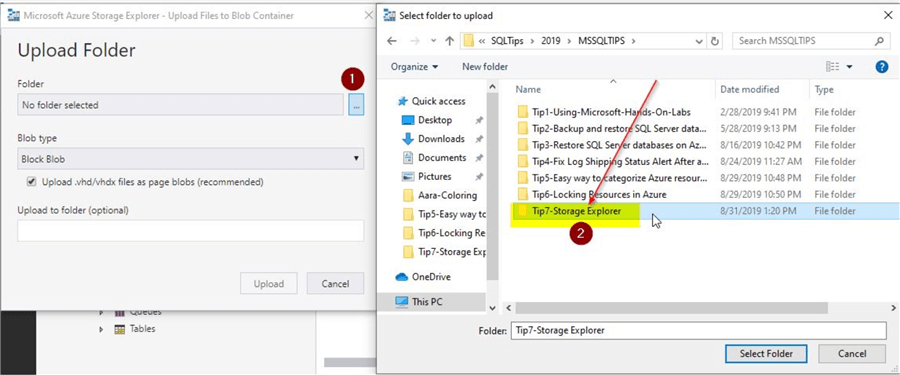
To run a sample application against your S3Proxy instance, refer to the AWS Java sample app repo to test your S3Proxy deployment.
AZURE STORAGE EXPLORER FOR MAC UPDATE
If you have a need for s3proxy.virtual-host, update nf with your own docker ip.ġ92.168.99.100 demostoragecontainer.192.168.99.100.Update nf with your own storage provider backend.If you have not done so, please follow these steps. The below steps assume you have Docker Toolbox installed on your local machine.

AZURE STORAGE EXPLORER FOR MAC CODE
As a result of our engagement, customers can now leverage S3Proxy to reuse existing Java code with the S3 Java SDKs against Azure Blob Storage. We partnered with Bounce Storage, the maintainer of S3Proxy, and Apache jclouds, to enable Azure Storage support for S3Proxy. S3Proxy represents a path for customers who are blocked during onboarding and would otherwise be unwilling to rewrite basic blob management code against the Azure Storage APIs or SDKs. Companies ranging from enterprises to startups use the S3 API because it abstracts the storage backend from the apps. This affects anyone who is currently using the S3 API and is considering Azure Storage as an alternative or hybrid solution to their existing storage backend. To connect to Azure Storage, customers are required to update their existing code to use the Azure Storage SDK, which for enterprises can take awhile and S3-compatibility is one of the major features customers look for when they evaluate storage solutions side by side. S3Proxy allows applications using the S3 API to access storage backends like Microsoft Azure Storage. This post explains in detail how we added S3 API support to Azure Storage, and how you can leverage this solution to enable your applications to store and retrieve content from various cloud storage providers. Currently, Azure Storage does not natively support the S3 API. Customers use the S3 API to connect to many S3-compatible storage solutions such as Google storage, OpenStack, RiakCS, Cassandra, AliYun, and others. These S3-compatible competing service providers use the standard programming interface to help customers migrate and to enable customers to write cloud-agnostic solutions. The error message got improved with the latest update of the Azure Function CLI.Over the years, due to the wide adoption of Amazon S3, the S3 API has become the de facto standard interface for almost all storage providers. Info: Here you can find the issue on GitHub. I logged this issue on GitHub and got a response that timer triggered functions also require storage to run. The error itself only said: “A ScriptHost error has occurred”, which of course does not say much of what is going on. This blocked me from being able to debug my function. When I created my first timer triggered Azure Function locally, I always received ScriptHost errors. As I love to work with Visual Studio Code and Node.js, I choose to use the Azure Functions CLI. It is up to you to choose which one you want to use. Visual Studio Tools for Azure Functions: Right now, you have the following options: Azure Functions CLI, Visual Studio Tools for Azure Functions or use the Serverless Framework.

Since the general availability of Azure Functions which was announcement back in November 2016, they are becoming even more popular and are being used for various kinds of things.Įven the local development process of Azure Functions got a lot better. These days I use Azure Functions quite a lot for automating things.


 0 kommentar(er)
0 kommentar(er)
